#Edward Hall
Text




All Creatures Great and Small (2020-)
Audrey Hall and her four sons - sometimes exhausted, always proud mother.
She gave birth to one and some higher power teared up over all the motherly love she had in her heart and gave her three more for free! (True story)
Inspired by owlsie-hoot's adorable hugs (x)
#all creatures great and small#acgas 2020#audrey hall#one son for each season!#richard carmody#tristan farnon#edward hall#james herriot#proud mother
117 notes
·
View notes
Text




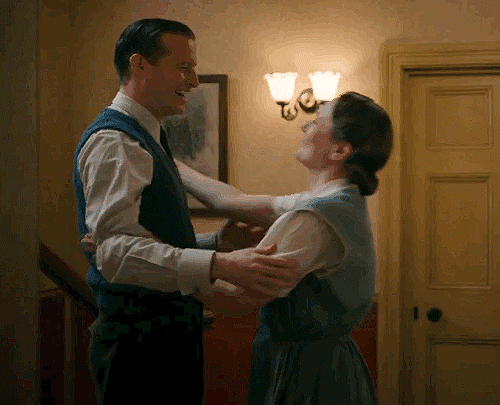


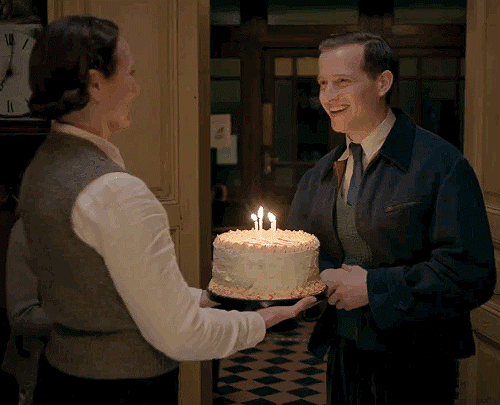


Audrey and her boys.
All Creatures Great and Small (2020)
#acgas 2020#siegfried x audrey#audrey hall#tristan farnon#james herriot#edward hall#all creatures great and small#gifset#mine#siegfried farnon#acgas
280 notes
·
View notes
Text
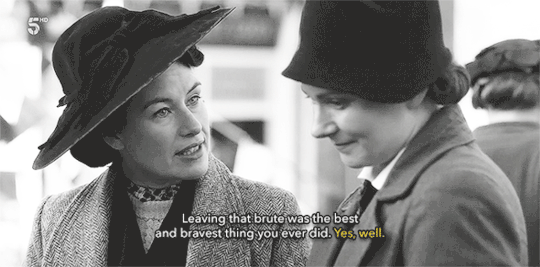
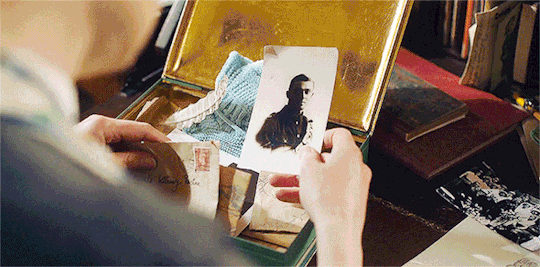






"I don't hate him, Edward."
#Audrey Hall#Anna Madeley#ACGAS#All Creatures Great and Small#ACGAS 2020#backstory#Robert Hall#Edward Hall#tried to combine some of the backstory and the things she said about Robert with the scenes we have seen in s4 so far#Love this backstory for Audrey#and how she decided to handle it#that she was brave enough to leave him and never stopped to see the good in him#even if he treated her badly#and now she is free#and a new woman: like Siegfried said#I am so happy for you Audrey!
125 notes
·
View notes
Text


Their boys🥹
#acgas#all creatures great and small#s4#tristan farnon#Edward hall#siegfried farnon#audrey hall#siegfried x audrey
51 notes
·
View notes
Text
The kyng, after his returne [from Calais] maried priuily[privily] the lady Anne Bulleyn on sainet Erkenwaldes daie [14 November], whiche mariage was kept so secrete, that very fewe knewe it, til she was greate with child, at Easter after.
—Edward Hall’s account of Henry VIII and Anne Boleyn’s secret wedding on 14 November 1532 [via On This Day in Tudor History by Claire Ridgeway]
15 notes
·
View notes
Text
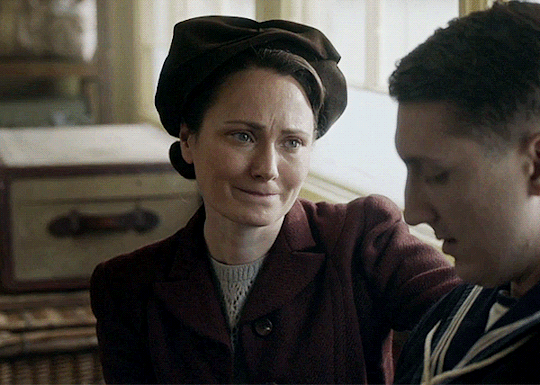







# acting masterclass.
#acgas spoilers#acgas s3 spoilers#still cant find the right words to describe what she did in this episode#i am so proud of her#and the script was beautifully written#what an episode#acgas 2020#all creatures great and small#anna madeley#audrey hall#all creatures great and small 2020#acgas#edward hall#period drama#series 3
152 notes
·
View notes
Text




What did you say, Edward?
#🥲#I'll be crying in the corner for the forseeable future#acgas 2020#all creatures great and small#acgas#all creatures great and small 2020#acgas spoilers#all creatures great and small spoilers#audrey hall#mrs hall#edward hall#anna madeley
200 notes
·
View notes
Text
Richard's charge at Bosworth, according to Edward Hall's chronicle.
...And being inflamed with ire and vexed with outragious malice, he pit his spurres to his horse and rose out of the dyde of y range of his battaile, leyung auntgardes fighting and like a hungry lion ran with spere in rest towards him.
Therle of Richmonde perceyued wel the king furiusly commying towards him, and by cause the hole hope of his welth and purpose was to be determined by battaill, he gladly proferred to encoutre with him body to body and man to man.
Kyng Rychard set on so sharpely at thefirst Brout y he ouerthew therles standarde, and slew Sir William Brandon, his standarde bearer(which was father to Sir Charles Brandon by kynge Henry VIII. created duke of Suffolke) and marched hand to hand w sir Ihon Cheinye, a man of great force and strenght which would haue resisted him, and the said Ihon was by him manfully ouerthrowen, and so he making open passage by dent of swerde as he went foward,
therle of Richmond with stode his violence and kept him at the swerdes poincte without auantage longer than his companions other thought or iudged, which beying almost in dispaire of victorie, were sodainly recomforted by Sir William Stanley, whiche came to succours with III. thousand tall men, at which very instant kyge Richardes men were dryuen back and fledde, and he himself manfully fyghtynge in the mydell of his enemies was slayne and brought to his death as he worthely had deserued.
Edward Hall's Chronicle was first published in 1548, admitably many decades after Bosworth(1485). But interestingly, not just Vergil describes Henry VII withstanding brunt of Richard's charge for at least a while...
Not all details are same as in my previous post about battle of Bosworth(because i tried to find more contemporary sources) but it is very interesting to hear what more common people(not noblemen and courtiers) thought happened in Bosworth.
If anybody would wish to read in Hall's chronicle, it's online!
And here is the link:
24 notes
·
View notes
Text

4 notes
·
View notes
Note
Hi! This is a kinda random question, but I'm getting a little confused about the various contemporary and most contemporary chroniclers of the Wars of the Roses so I figured I should ask.
I know the basic gist and background of Crowland, Mancini and Vergil's accounts, but I'm a very confused with Thomas More and Edward Hall. When exactly were their accounts written and published respectively? And was there an overlap between them - I remember reading somewhere that Hall borrowed quite a bit from More's account when writing about what happened before Henry VII's ascension, particularly for Edward IV and Richard III's reigns. I think some sentences are pretty much word-for-word the same. But I read this a while ago so I may he mistaken.
And did Grafton publish his own Chronicle, or did he compile and print other historians' chronicles?
ALSO (sorry) do we know when the Hearne's Fragement was originally written? I was reading "Later Plantagenet and Wars of the Roses Consorts" and Joanna Laynesmith, when writing about he excerpt pertaining to Edward and Elizabeth's marriage, writes that it was written "decades later" by "a servant of thr Howard family who had been are court in the late 1460s". Is that the generally accepted consensus?
again, sorry if this seems super random
Hi! Sorry for taking so long to reply. Thomas More never wrote a whole account of the Wars of the Roses, focusing instead on Richard III (his work is called, after all, History of King Richard III). He began writing in the early 1510s but his manuscript was never finished and was printed incomplete only in 1543. More had served in Bishop Morton's household so he had access to witnesses that had lived through Richard's reign, but even then, his account is very much not a chronicle in the same sense that Croyland's, The Great London's, Fabyan's, etc, were. More wrote a commentary on tyranny, and it's likely that he meant it as a kind of manual, a warning against the negative example of a bad prince in the mould of certain classical writers (the account's structure is borrowed from Tacitus and the style inspired by Suetonius).
Edward Hall began writing his "The Union of the Two Noble and Illustre Families of Lancastre and Yorke" during Henry VIII's reign but it was only published in 1548, a year after Hall's own death. From what I've read, Hall borrowed both from Vergil's account and More's. Even then, according to Charles Ross, 'Hall is acknowledged to have information on the battles of this period not found elsewhere'. Richard Grafton in turn was actually the one who published Edward Hall's chronicle. As far as I know, Grafton was primarily a printer so he published and compiled other people's works.
The information about Hearne's Fragment being written decades later after the events that he narrates is given by the author himself. He refers to Thomas Howard as Lord Treasurer so his account could only have been written between 1500 and 1522, the period when the Duke of Norfolk held that office. It's generally accepted that if he wasn't a servant of the Howard family at that time, he must have been residing with them in the period that he wrote his chronicle. The author himself says that he had been a servant of Edward IV:
My purpose is, and shall be, to write and shew those and such things, the which I have heard of his [Edward IV's] own mouth. And also in part of such things, in the which I have been personally present, as well within the realm as without, during a certain space, most especially from the year of our Lord 1468 unto the year of our Lord 1482, in the which the forenamed King Edward departed from this present life. And in witness whereof the Right Illustrious Thomas, Duke of Norfolk, Treasurer of England, as most personally present [for the most part of his flourishing age] in the house of the said right noble prince continually conversant, can more clearly certify the truth of such acts and things, notable of memory, the which fell in his time.
It's such a shame only a fragment of this account survives! The surviving fragment goes only so far as September 1470.
Hopefully, this belated answer can help you. Again, sorry for taking so long to reply! 🌹x
8 notes
·
View notes
Text
through the whisky mists

20. “There’ll be another letter soon,” Siegfried said softly. There was no one living who would’ve known he was capable of speaking so to a human being; James might suspect but Tristan wouldn’t believe he could lower his voice this gently unless he murmured to a suffering animal.
“You don’t know that,” Audrey said. “I know you mean to be kind—”
“I don’t. I can’t stand to see you this way, worse than when he didn’t write.”
He didn’t say Edward, he didn’t say your son. He knew what would hurt beyond bearing.
“Hope is never in vain,” he said.
#all creatures great and small 2020#acgas 2020#siegfried/audrey#siegfried farnon#audrey hall#edward hall#wwii#canon au#drabbles#angst#hurt/comfort#romance
17 notes
·
View notes
Text



#acgas#acgas 2020#all creatures great and small#all creatures great and small 2020#james herriot#tristan farnon#edward hall#kinda hate how edward is sort of blurry but he's in motion when that screen shot takes place#I think
5 notes
·
View notes
Photo








Audrey, Siegfried and their sons.
3x05 and 3x07
#guyyssss I am so out of practise with making gifsets and its v obv#but I hope you like this thing I made#I hope it makes you tear up bc I cried making it#there's a reason these scenes were so similar ok#they're visual masterpieces and parallels#acgas s3 spoilers#acgas 2020#siegfried farnon#audrey hall#edward hall#tristan farnon#siegfried x audrey
215 notes
·
View notes
Text






ACGAS August challenge / @acgasfanchallenge
Week 1 prompt: picture/photograph
“When words become unclear, I shall focus with photographs." Ansel Easton Adams
#acgasaugust#all creatures great and small#siegfried farnon#Audrey Hall#Edward Hall#Evelyn Farnon#ACGAS#acgas edits#siegfried x audrey#otp ridiculous creature#photos tell stories#they always will even when they are just a tiny glimpse#they hold on to a moment for forever
99 notes
·
View notes
Text
"And the viii. day of January folowyng dyed the princes dowager at Kymbalton and was buried at Peterborough. Quene Anne ware yelowe for the mournyng.”
-Edward Hall about Anne Boleyn's yellow dress for Queen Katherine of Aragon's death
#katherine of aragon#anne boleyn#edward hall#tudor history#tudor dynasty#yellow is not the mourning colour in spanish royalty btw#just saying
19 notes
·
View notes
Text
Edward Hall, in his “Chronicle”, describes how on the evening of Shrove Tuesday at York Place, Cardinal Wolsey, the King and ambassadors enjoyed a supper followed by a pageant in the great chamber, which was richly decorated with arras and torches. At the end of the chamber was a castle with towers decorated with banners, one showing three “rent hartes” (torn hearts), another showing “a ladies hand gripyng a mans harte” and the third showing “a ladies hand turnyng a mannes hart” upside down. One of the towers had a cresset burning and in the castle were musicians, hidden from sight, and eight ladies visible in the towers. These ladies, dressed in white satin, were Beauty, Honour, Perseverance, Kindness, Constance, Bounty, Mercy and Pity, the virtues held high in chivalric tradition. The King’s sister, Mary Tudor Queen of France, played Beauty, the Countess of Devonshire played Honour, Jane Parker (later Boleyn) played Constancy, Mary Boleyn played Kindness and Anne Boleyn played Perseverance. Hall describes how each lady had her name (or virtue) embroidered on her dress in gold, and how they wore cauls and gold Milan bonnets decorated with jewels.
Hall goes on to describe how these women, or virtues or graces, were guarded by eight women dressed as Indian women who were named “Danger, Disdain, Gelousie, Vnkyndenes, Scorne, Malebouche, Straitngenes” or Danger, Disdain, Jealousy, Unkindness, Scorn, Malebouche (evil tongue/mouth or Sharp Tongue) and Strangeness, which Eric Ives takes to mean “Off-handedness”. Suddenly, eight lords dressed in cloth of gold caps and blue satin cloaks entered the chamber “led by one all in crimosin sattin with burnyng flames of gold, called Ardent Desire”. These men were named “Amorus, Noblenes, Youth, Attendance, Loyaltie, Pleasure, Gentlenes, and Libertie” and the kyng was chief of this compaignie”. Ardent Desire then asked the ladies, the virtues, to come down from their towers, but Scorn and Disdain told him that “they would holde the place”, so the men attacked the castle throwing dates, oranges “and other fruites made for pleasure” at it. The ladies defended the castle with rose water and “comfittes” or sweetmeats and although Lady Scorn and her company tried to defend themselves with “boows and balles”, they were forced to flee and the lords took the “ladies of honor as prisoners by the handes” and led them out of the castle to dance. The lords and ladies then unmasked themselves and went on to enjoy a rich banquet with those who had watched the Château Vert pageant.
—Claire Ridgeway talking about the Château Vert pageant on 4 March 1522*, On This Day in Tudor History
*Ridgeway dates the pageant to 1 March, but most other sources date it to 4 March. I think the confusion comes from mixing up the more general Shrovetide celebrations and Shrove Tuesday. Shrovetide (the name for the entirety of the Shrove celebrations) began on 1 March, whereas the Château Vert pageant happened on Shrove Tuesday which was 4 March.
2 notes
·
View notes